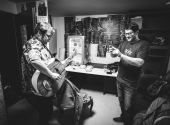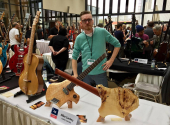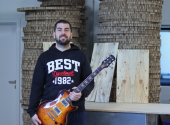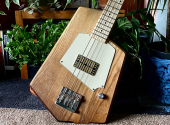Dreamstruments #21: Dalibor Bzirský Violins
Violin-making has a strong tradition in Bohemia. It is one of those things that is not talked about as often as hockey or football, but its impact is much more global. Besides, while only the most devoted fans will remember the results of the 2012 hockey team, violins, or at least the really good ones, have been with us for decades and even hundreds of years, so instead of enjoying that "pretty good bronze medal", we can appreciate the live sound of real Stradivari instruments. One of those who keep this tradition going and make sure that the 300-year-old pieces still sound good and don't fall apart is the Prague luthier Dalibor Bzirský.
Before Dalibor started restoring violins made by old masters such as Guarneri or Stradivari, he built instruments following other Czech traditions, namely recycling and DIY. In his interview with Hudební rozhledy magazine, Dalibor recalls that he built his first violin at the age of thirteen from an old cabinet door. "I bent the ribs over a candle in an absolutely horrible way. Of course, the violin looked like a folk instrument from somewhere in the mountains, where the maker had a single knife he used to carve toys in the winter and then decided to carve a violin with it," he says. His first instrument is still in his workshop. However, his determination to achieve a violin at any cost seemed to enlighten his parents and his father soon took him to the workshop of the violin maker Bohuslav Langer on Petrské náměstí in Prague, who then taught the young violin maker to produce further works.

After graduating from high school, Dalibor went to study with Jaromír Joo, another Czech violin maker whose name resonates in cultural circles. But besides that, he had to attend regular "supervisions" as part of his distance learning programme at the violin school in Luby. This consisted mostly of theory exams and inspections of the assigned work, which he completed under the supervision of Mr Joo. Dalibor recalls the beginning of his work in his workshop with an anecdote that is more reminiscent of the movie Karate Kid than of today's education system. After training in tool sharpening, the future violin maker had to make fifty violin sound posts, which were then checked one by one by his master.
After completing his studies and work in Jaromír Joo's studio, Dalibor opened his own workshop. As part of the transition to his own brand, he had the opportunity to work in Claude Lebet's studio. Lebet is not only a master of the violin-making craft but also a great expert in the history of instruments, who has written numerous works on the subject and has also issued certificates for historical instruments. Dalibor commuted to Lebet's workshop in the canton of Neuchatel for about 20 years, and during this time he participated, for example, in the construction of 46 stringed instruments for the orchestra of the National Opera and Ballet of Tbilisi in Georgia.
In addition to working on new instruments and sharing his experience with other members of Lebet's team, Dalibor gets to work on historical instruments made by the most famous masters. This experience, for example with the Amati violin of 1567 from the collection of King Charles IX, or the Vadim Repin violin made by Giuseppe Guarneri del Gesù in 1736, has greatly influenced Dalibor's work. There he combines his own vision with classical models.
Evolution? There's nowhere to go yet
"With violins, it's not like with guitars where you have a jumbo, a Spanish or a parlour guitar. It wasn't until the middle of the 19th century that the top Italian instruments reached the rest of Europe, Paris and London and figures like Jean-Baptiste Vuillaume appeared, who bought Tarisio's collection. That's when Europe started to get acquainted with the Italian school of Stradivari or Guarneri. These are also the instruments that serve as a precursor to today's models, although not in their original Baroque form, because around the middle of the 19th century, they began to be rebuilt into their current form, which was suitable for playing contemporary music," says Dalibor, adding that violin makers actually make "almost the same thing all the time. With a few exceptions, like Honza Špidlen, who works with carbon bracing and other unusual features."
As for baroque instruments, they are coming back into fashion, but as Dalibor adds, "You can't play Prokofiev on that".
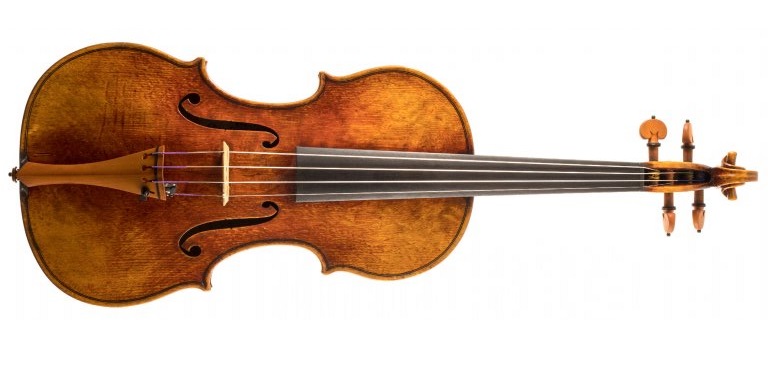
Restoration? No two violins are alike
"I never know if I'm going to get it right. It's always an improvisation," says Dalibor about restoring historical instruments, adding that each time the process starts from the first step. "What evolves under your hands also tells you what the next step will be. I never really know how I'm going to finish when I start. Each fix, each retouch, even when I am dealing with the same problem, is completely different," he clarifies.
When major interventions are needed, which is quite often with instruments that are 400 years old, one has to look for the right piece. "In every workshop where instruments are made, you have this box, you could say an archive of old woods, where you can search. There I can look for pieces that aesthetically fit, have the same grain, similar growth rings," says Dalibor, adding that the wood drawing is just the first step. "The main thing is that the piece is already old. You can tell, especially when staining or varnishing, as there I have no way to reproduce the old tint artificially. And even then, under certain lighting, the new material will be visible under the lacquer anyway," adds the violin maker.
Another challenge is the colour and especially the thickness of the paint. Today's technology enables us to reproduce the right "Amati shade"... well, if I exaggerate a bit, in every paint shop. But to make it look authentic... Let's just say that making a guitar look 50 years old is a piece of cake, compared to repairing the paint on a Stradivari or Amati, which are much older and many times rarer.
"It's difficult," says Dalibor. "You can try things on the side, but I always have to think about layering the lacquer – multiple layers of different colours over each other. And only over time do I find out if I've got it right. Both with the shade and the thickness of the paint. It shouldn't pile up –it's a fraction of a millimetre, but it shows. Sometimes I can work around it by staining it and then covering it with clear lacquer," he reflects.
"You always have to use natural materials, the same ones used to make the instruments. Firstly, to keep the colour consistent, and secondly, just so that it doesn't show under different lighting. With a retouched instrument, the difference shouldn't be too noticeable," he explains.
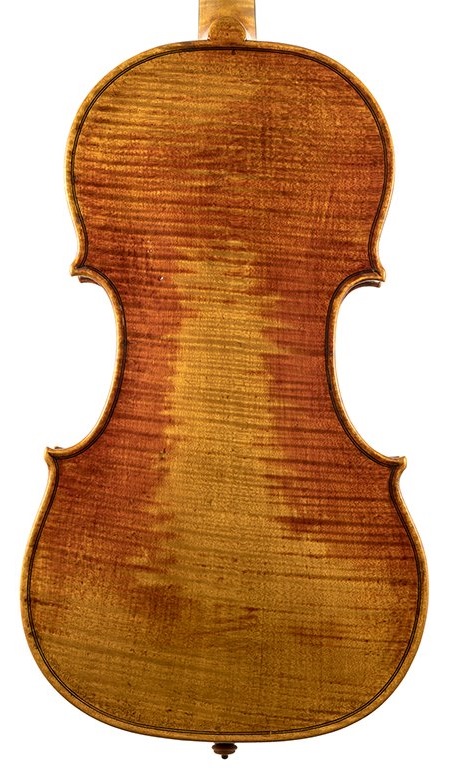
Wood sourcing, the pain of the modern world?
"The wood from the Dolomites, Val di Fiemme, where the Italian masters, to whom we still refer, sourced their wood, is still popular today. That timber still exists, it can still be bought, it is still being logged, they even had a massive blowdown a few years ago – I think five or seven – so there was a campaign to invest in that timber so that they could harvest it on the spot before it went bad, and the instrument makers had the right of first refusal. But because of the climate change over the last few centuries, the timber looks very different now," says Dalibor.
"I really like the Alpine timber, it is fragile, light, resonant... But at the same time, you might also get something good for example in Šumava in the Czech Republic. I've made a lot of instruments from spruces from this region – of course, it depends on the subsoil where it grows. And some of those Šumava pieces are the best-sounding violins I've made," he adds.
How do you find customers for master instruments?
"My clientele is mostly foreign now," Dalibor reveals but clarifies that they are actually the next generation of former customers from the studios where he used to work. "Now I'm building a new clientele, I go to Sicily, Catania, Naples and Florence a lot. I take new instruments there and bring back instruments for restoration. But I don't want to live out of a suitcase anymore. I love to go there for two or three days and then come home again. Anyway, my customers love to visit Prague and its surroundings, stay for a few days, talk about music and violins and then go home again," he explains.
Once you become a pro at restoring old instruments, can you still build a career as a maker? According to Dalibor, these disciplines are not so easily separated. "I would prefer to tone down the restorations and just make new instruments. But restoration is a very important part of the business cycle because when you put together an old instrument, it helps you get orders for new instruments," laughs Dalibor.
If you have found an error or typo in the article, please let us know by e-mail info@insounder.org.


